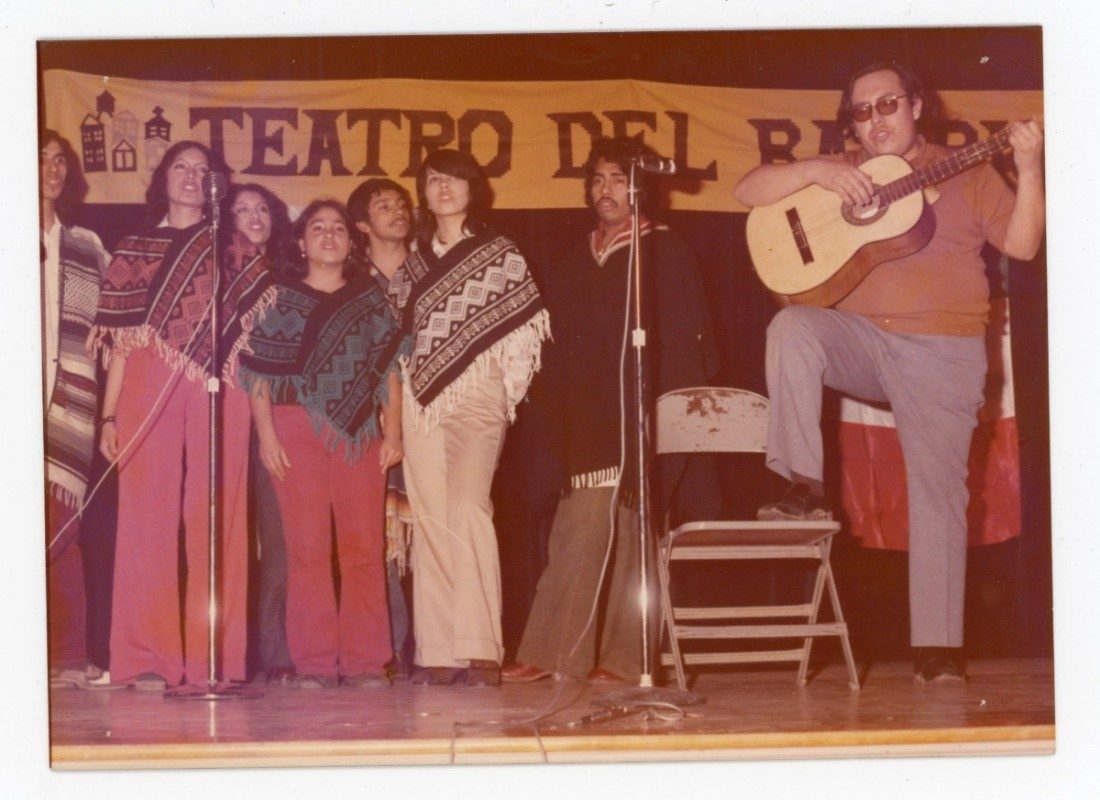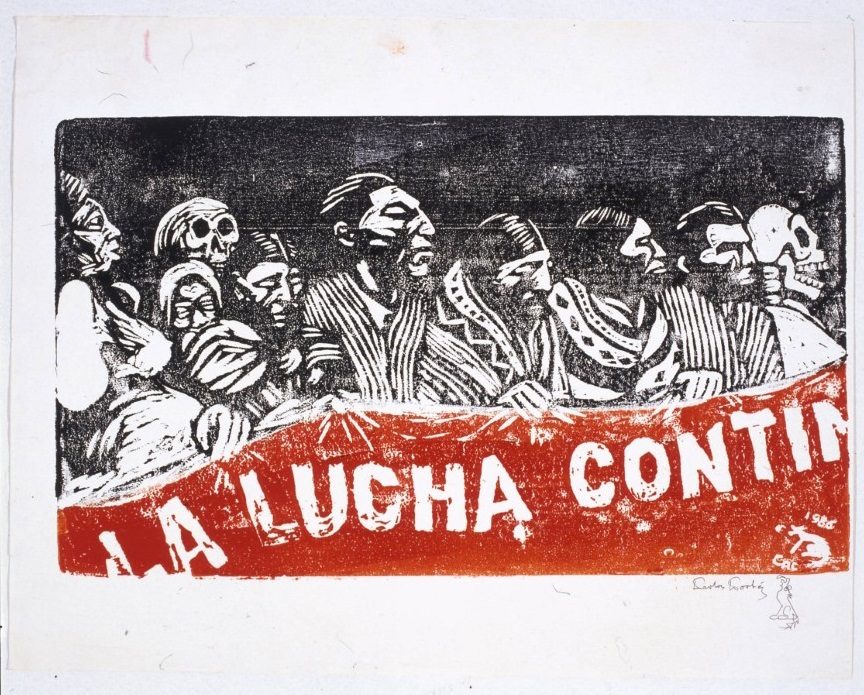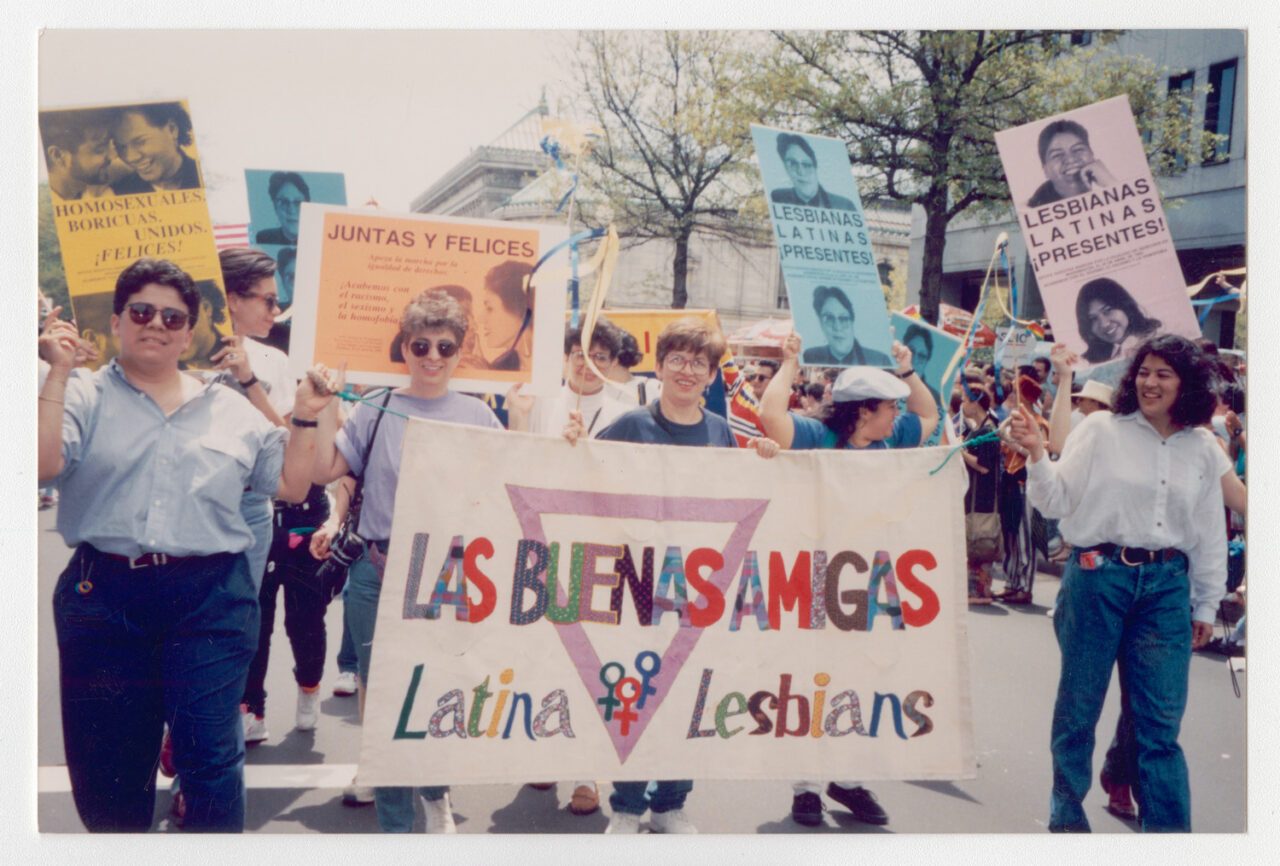Since January 2024, CHM curatorial volunteer Nez Castro, a senior in history at University of Illinois Chicago, has been working with CHM curator of civic engagement and social justice Elena Gonzales on a key component of an upcoming exhibition. In this blog post, he writes about working on the Digital Communities’ Scrapbook, a crowd-sourced project.
The Digital Communities’ Scrapbook is an album of crowd-sourced photographs that will appear in Aquí en Chicago, an exhibition celebrating Latine communities’ historically persistent cultural presence in Chicago. Through it, visitors can view images from CHM’s collection and those I have gathered during the last six months of exploring Chicago. They can also share their own photographs, adding their memories to a larger story of the people, places, and events that form Chicago’s Latine history. The scrapbook will show the presence and diversity of these communities using these images. A critical part of this will be built of photographs submitted by visitors and readers like you.
In late February, I met with the Rodriguez family, who own Dulcelandia, a local candy and party supply chain. I visited their 26th Street location and met with founders Eduardo and Evalia Rodriguez and their children Marco and Eve. Eduardo and Evalia proudly shared family memories through personal photographs and newspaper articles, showing the growth of their children and their business, which they started in 1995. After scanning photographs, they even gave me delicious guava juice for the road!
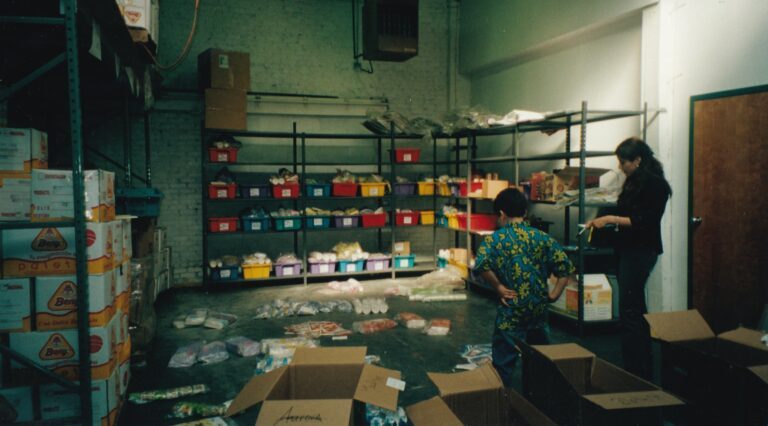
Eve and Marco inspecting a candy shipment from Mexico, 1995. Photograph courtesy of the Rodriguez family
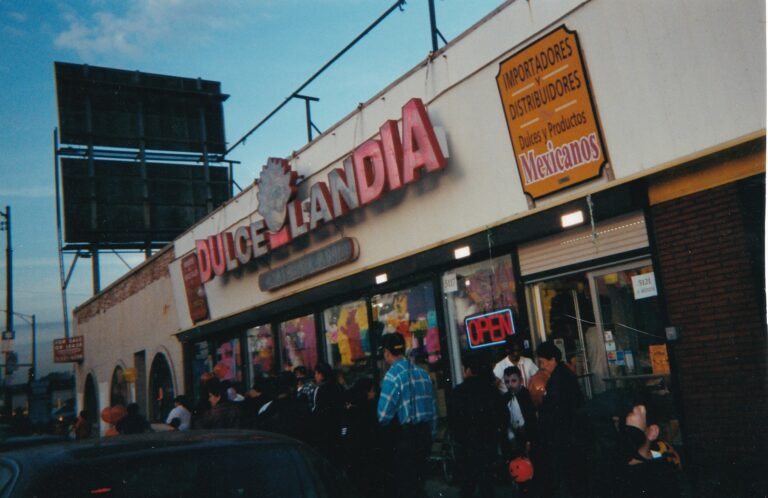
Trick-or-treaters lined up in front of Dulcelandia’s Kedzie location for their first Halloween in operation, 1995. Photograph courtesy of the Rodriguez family
That same day, I visited South Chicago and met with Roman and Maria Villarreal, artists and longtime residents, at their home. Every inch of their home was covered with paintings and sculptures, their own and other’s gifts to these pillars of local Mexican art. Maria searched her archives and found photographs of Roman painting murals, which are no longer on display, friends at old tamale parties, parades, park openings, quinceañeras, baptisms, and other milestones. Maria and Roman are dedicated to creating art, providing a perspective on the community that has seen decades of growth, destruction, and evolution in Chicago. Their hospitality was humbling; they lent me a book and even got tacos for us.
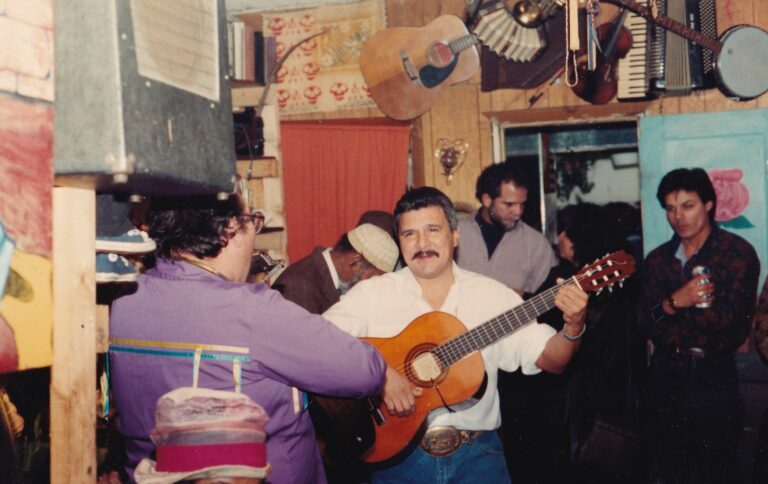
Frank Corona playing the guitar at a tamale party with the late Gamaliel Ramírez in the background, 1980s. Photograph courtesy of Maria and Roman Villarreal
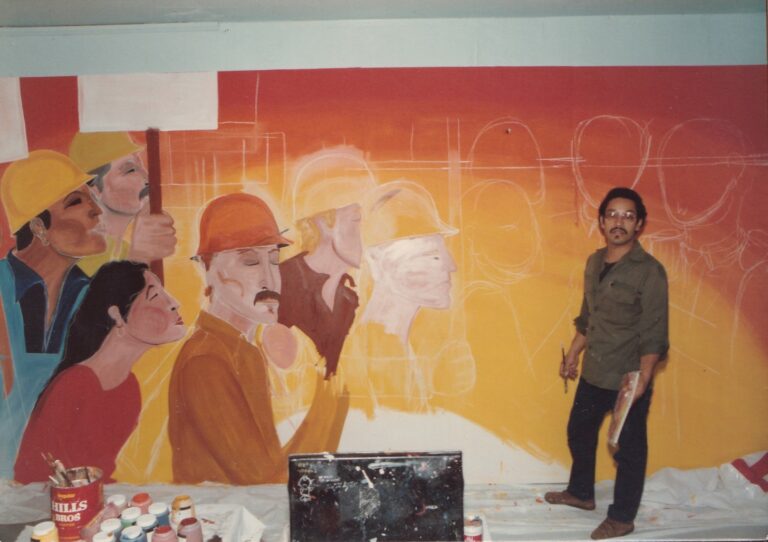
Roman Villarreal painting a mural at the headquarters of the now-defunct Mexican Community Committee of South Chicago, 1980s. Photograph courtesy of Maria and Roman Villarreal
A few weeks later, the Kichwa Community of Chicago enriched the scrapbook with Ecuadorian and Indigenous perspectives. Being of Bolivian and Mexican heritage, I enjoyed learning about familiar ideas and Indigenous practices that I had heard of but knew little about. Both countries have Kichwa/Quechua speakers and were once part of the Tawantinsuyu (Inca Empire). Inti Raymi, the festival for the sun god, Inti, interested me the most. Growing up, I had vague ideas about this festival, knowing the name and some connection to the sun god. It felt was fulfilling to learn about how people dressed as Inti, the festival’s importance, and the water rituals attached to it. After this meeting, I felt more connected to my Bolivian roots and hope to help others feel the same through the Scrapbook.
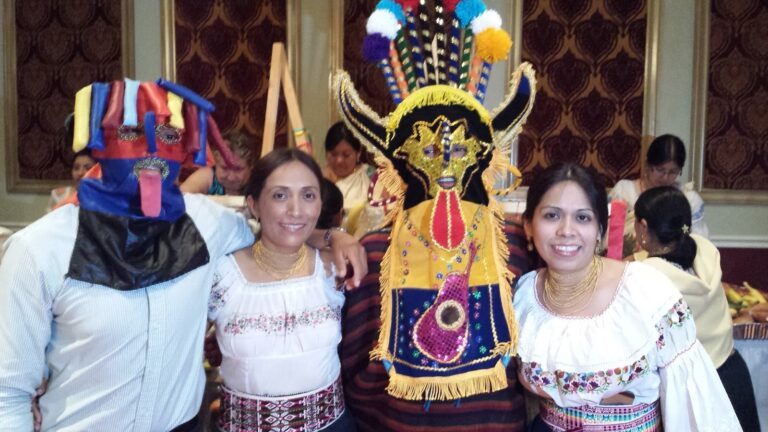
Members of the Kichwa Community of Chicago dressed in traditional costumes and clothing for Inti Raymi, 2015. Photograph courtesy of the Kichwa Community of Chicago
Working on the Digital Communities’ Scrapbook has been an exciting opportunity to highlight the diversity of Latine Chicago. So far, I have traveled 600+ miles within Chicago, speaking to business owners, politicians, artists, nonprofit workers, and storefront employees. Through this effort, I have borrowed 142 images in addition to those already in the CHM collection. You can help us build this project by sending us your images (versión en español) adding to Chicago’s Latine history.
